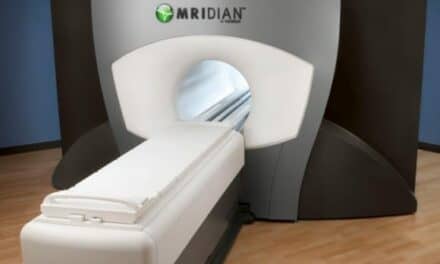09/25/06
Mercury Computer Systems Inc has released Visage™ MR, a magnetic resonance imaging (MRI) receiver product that has been shown in clinical trials to significantly improve image quality and reduce scan times.
Visage MR is a high-bandwidth, 16-bit analog-to-digital receiver board with advanced digital filtering and MRI-specific noise-reduction technology that improves signal-to-noise ratios in MR images, compared to existing offerings in the marketplace. Visage MR has four times the resolution of current-generation MRI receivers, coupled with an extremely high sampling rate. This combination extends dynamic range through decimation to 24-bits of resolution, preserving more of the MRI signal to allow the visualization of finer image detail, while also accelerating fast MRI imaging sequences.
The single-board, multi-channel receiver can be combined with multiple boards to operate in parallel, scaling acquisition channel capability to significantly reduce scan times in anatomical imaging—especially in 3D applications. ExactPhase™ innovative digital detection technology enables parallel acquisition with a zero-phase distortion, thereby reducing ghosting and ringing artifacts in MR images.
“We have shown Visage MR can make low-field MRI images look like those of a mid-field MRI and mid-field MRI images look as good as high field,” said Marcelo Lima, VP of commercial imaging and visualization at Mercury Computer Systems Inc. “It’s like you are getting extra field strength with Visage MR, without the cost of expensive magnets.”
Visage MR features a class-leading 130 MHz sampling rate that in addition to dramatically increasing dynamic range, also provides a high level of over-sampling capability to minimize quantization noise and maintain signal integrity. The direct sampling rate removes the need for an OEM’s intermediate frequency circuitry as well as special filtering modules, since the digital filtering and decimation occur automatically in the Visage MR receiver. This elimination of intermediate filtering steps further increases signal quality.


